India Pattern Volunteer Flintlock Musket….SOLD
Created on November 3rd 2014
British Volunteer India Pattern Musket
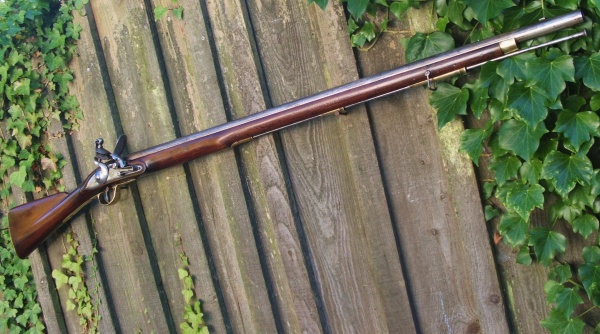
A fine example of the famous British Musket in its original Flintlock form. This sturdy British flintlock musket measures 55″ in overall length. The barrel is 39″ long and the trigger “pull” 13.1/2″. The stock is a single piece of straight grained walnut which stops short of the muzzle by 4.3/8″ and is capped by a brass fitting. The three ram-rod pipes, the trigger guard and the butt-plate are also all of the same quality brass.
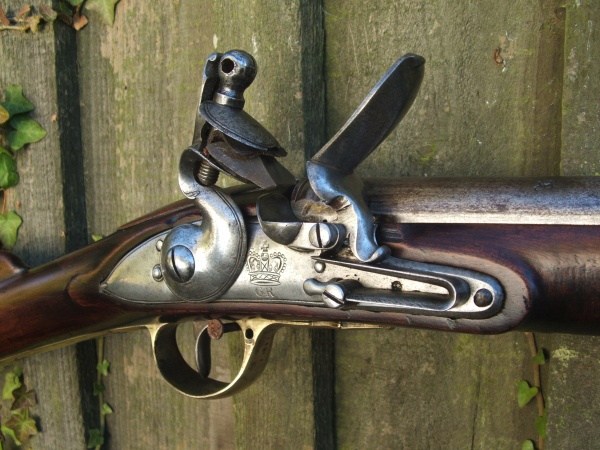
The “Brown-Bess” as this is sometimes incorrectly identified, gave rise to this particular type of musket – The India Pattern was the main arm for the Volunteer Regiments which remained on English soil and defended Britain against the threat of invasion. The India Pattern still used a flintlock mechanism and a smooth bore barrel of .75″
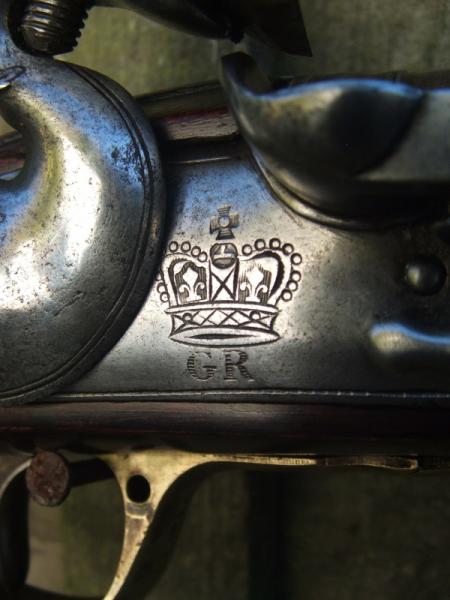
The lock mechanism which ignites the weapon is a sturdy affair which served its purpose perfectly adequately for its day. The flintlock was not replaced by the Army or militia that used it until the advent of the percussion muskets that followed. Although the flintlock system had many drawbacks, the authorities being slow to react to change, made their forces around the world suffer this process of ignition until they were absolutely sure that replacement was warranted.
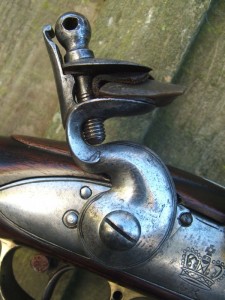
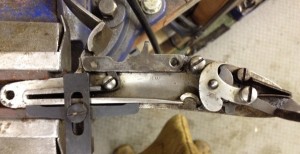
This particular musket has anomalies that make it interesting. The first, and most obvious, is the banana-shaped lock plate which has the correct GR-cypher set into the curved face of the lock, is blank to the rear of the cocking piece ! One would firstly expect to see the word “TOWER” or, the name of a private maker. It is also obvious that it has not been filed off. The lock is correctly border engraved with two thin lines, as is the swan-neck cock. It is understood that many of these locks were made in the Birmingham trade and then passed on to various end-users to complete. When lock was removed from the stock and the initials “B.W.” were clearly stamped into the back face, these would normally be the initials of the lock maker. Coincidentally, the name “WILLS” or possibly WILLIAMS” is stamped into the underside of the barrel. Barrel makers did not tend to also be lock makers. Now rises the second part of the conundrum, there is a larger “BP” stamped into the upper surface of the barrel – meaning unknown ?
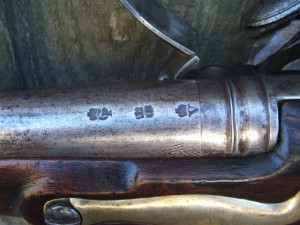
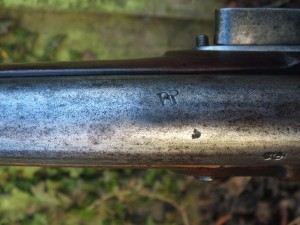
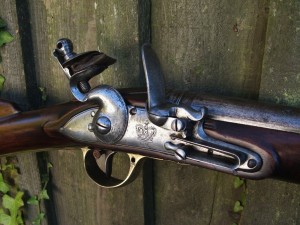
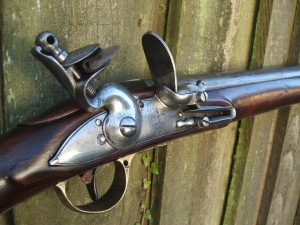
Finally on the subject of markings, there are a clear line of barrel proof marks on top towards the breech. The “GP” government proof, a simple crown with slightly difficult letters to read (private proof) under, and the crown “V” view mark. There is minimal corrosion about the barrel and touch-hole. The actual hole is clear and still well defined. The surface of the barrel has survived remarkably well and at the muzzle it has a single block front sight which also acts as the bayonet lug. There is a full length mushroom headed steel ramrod under the barrel which is retained by three brass pipes within a channel. A single sling swivel is mounted towards the front of the fore-end retained by a simple screw.
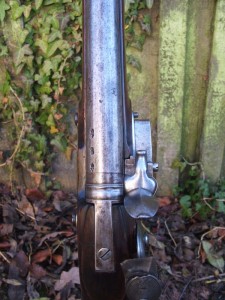
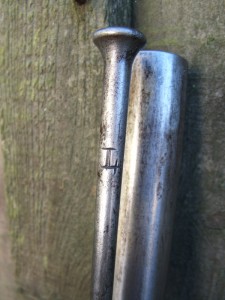
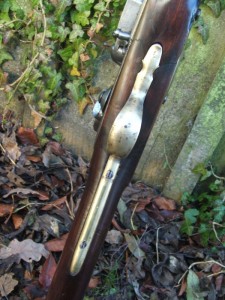
On removal of the steel rod it is possible to see two initials stamped into the channel. It is almost impossible to discern the letters but these would be the stockmakers initials. The ramrod itself also has a character which is difficult to make out towards the mushroom end that looks to be an “L2 or a “4” These marks look to be the chiselled assembly markings which are repeated in the form of Roman numerals on other parts, inside the Musket.
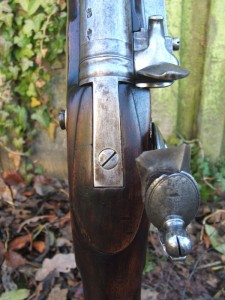
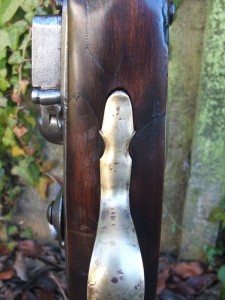
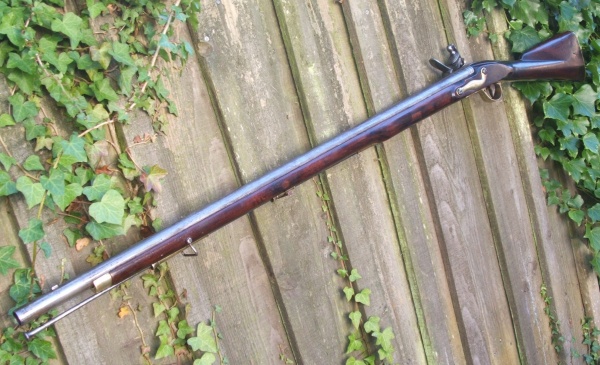
The mainspring is strong and the cock will hold in either of its two positions until required to move by some means or another. The frizzen spring is plain and feels strong. The weapon sparks well. The front leading edge of the top jaw has a very small chip missing. The musket is finished in the “white” and has minimal corrosion upon its exposed surfaces. The stock is in fine condition but does show evidence of some repairs about the lock, no doubt, the result of smashing it over some poor opponents head ? There is a well defined apron around the barrel tang and the classic comb-shaped butt. The bore is remarkably good for a smoothbore of this age. It has minimal pitting and a good wall thickness at the muzzle. Wood to metal fit around the lock is very good, there is a slight gap behind the barrel, it is not known if this is due to shrinkage?
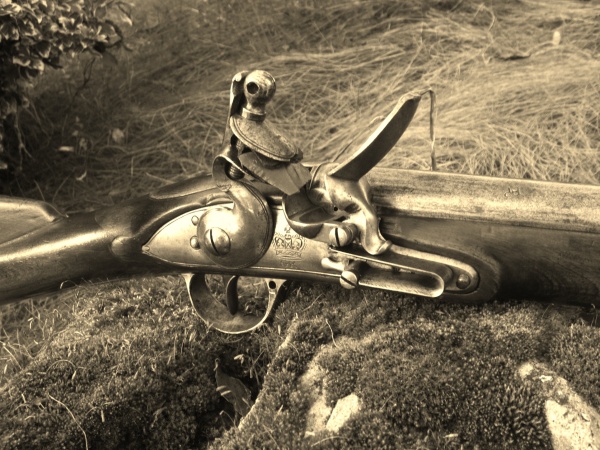
Altogether a fantastic piece of British Military history.
£ 2250…..SOLD
Comments Off on India Pattern Volunteer Flintlock Musket….SOLD